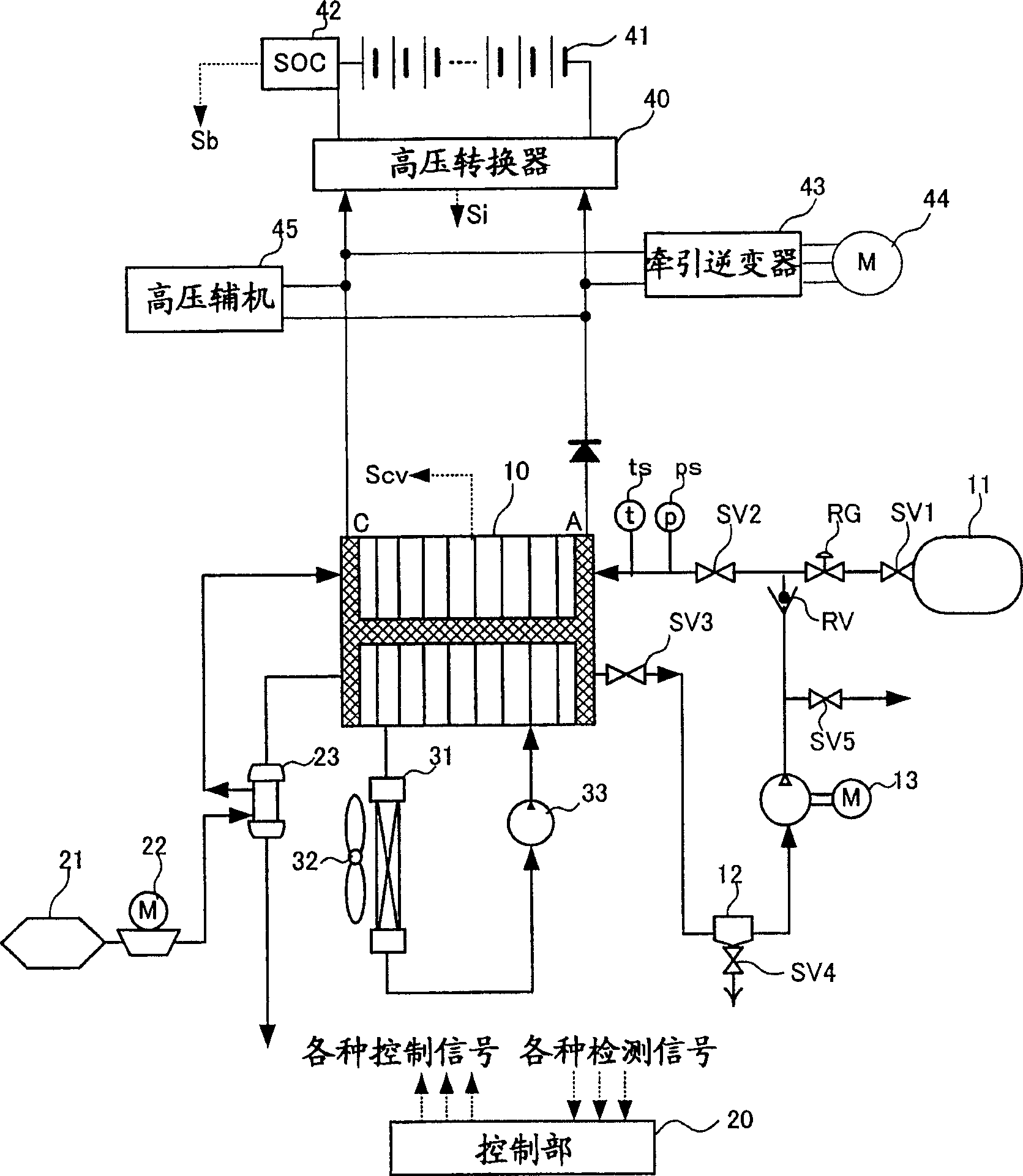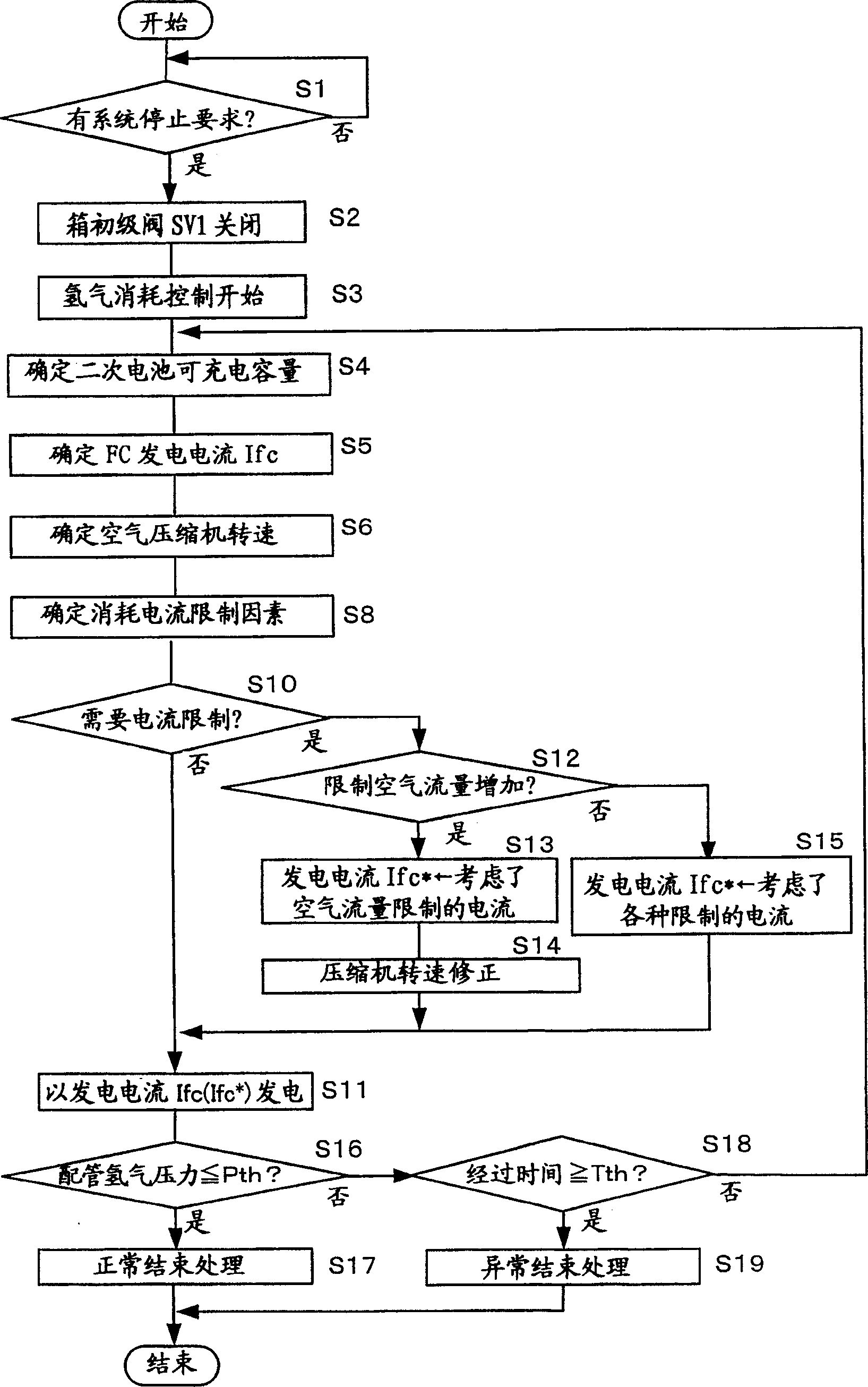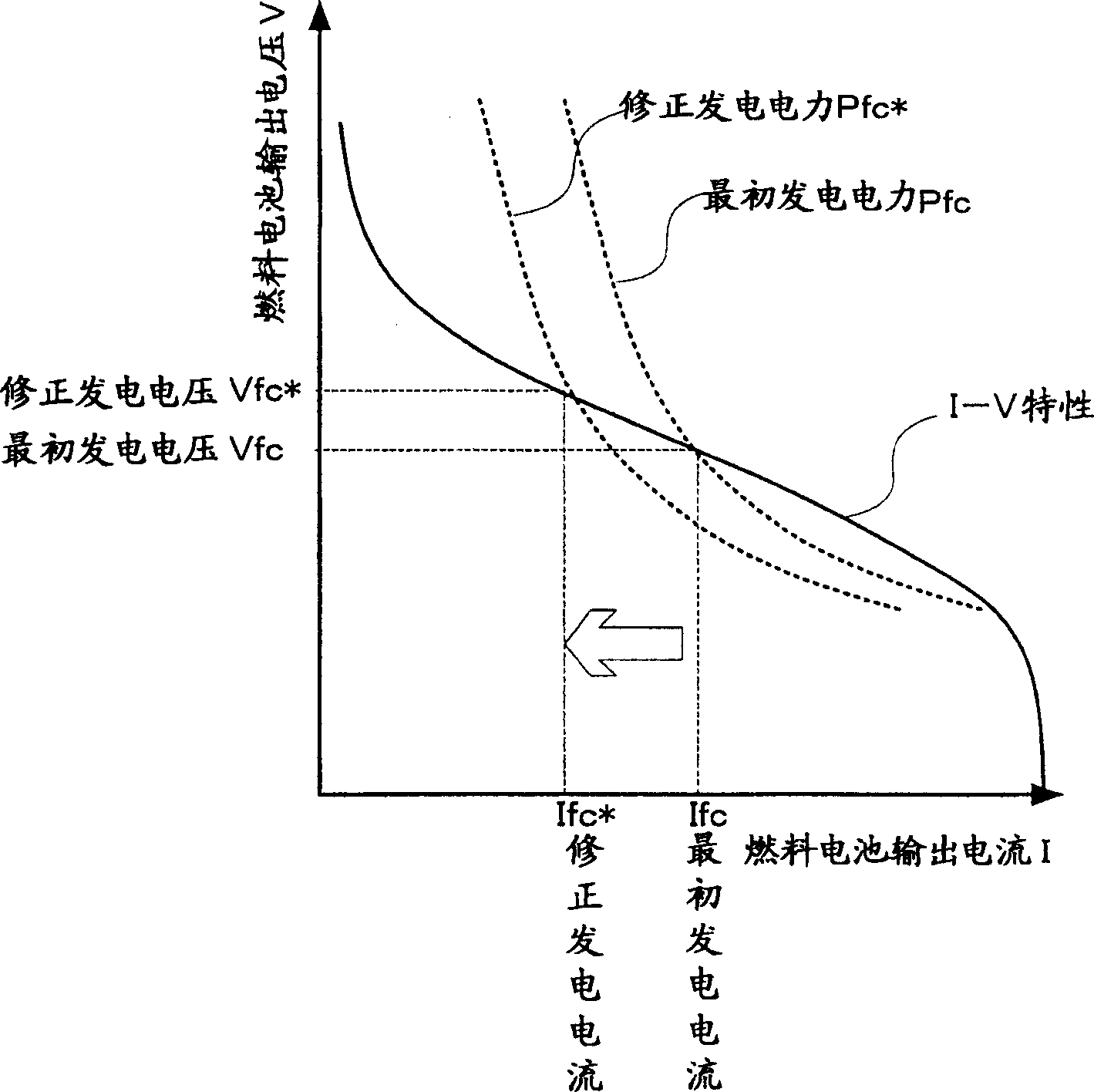Fuel cell system and method for removing residual fuel gas
A fuel cell system and fuel cell technology, applied in fuel cells, fuel cell additives, fuel cell heat exchange, etc., can solve problems such as inability to consume electricity, inability to process hydrogen in a short time, and power drop
- Summary
- Abstract
- Description
- Claims
- Application Information
AI Technical Summary
Problems solved by technology
Method used
Image
Examples
Embodiment Construction
[0037] Next, the best mode for carrying out the present invention will be described with reference to the drawings.
[0038] In an embodiment of the present invention, the power limitation processing method of the present invention is used in a fuel cell system mounted on a mobile body such as an electric vehicle. In addition, the following embodiment is only one form of this invention, and this invention is not limited to this.
[0039] Figure 5 A functional block diagram of the present invention is shown. like Figure 5 As shown, the present invention is a fuel cell system 1 for generating electricity from the fuel gas remaining when the operation is stopped by using the fuel cell 6, and consumes at least a part of the surplus electric power generated by the fuel cell 6 by the consumer device 3. A fuel cell system in which, at the time of consumption by the consumer 3 , the limit state of the system 1 is detected, and the generated power is changed by the power generatio...
PUM
 Login to View More
Login to View More Abstract
Description
Claims
Application Information
 Login to View More
Login to View More - R&D
- Intellectual Property
- Life Sciences
- Materials
- Tech Scout
- Unparalleled Data Quality
- Higher Quality Content
- 60% Fewer Hallucinations
Browse by: Latest US Patents, China's latest patents, Technical Efficacy Thesaurus, Application Domain, Technology Topic, Popular Technical Reports.
© 2025 PatSnap. All rights reserved.Legal|Privacy policy|Modern Slavery Act Transparency Statement|Sitemap|About US| Contact US: help@patsnap.com



